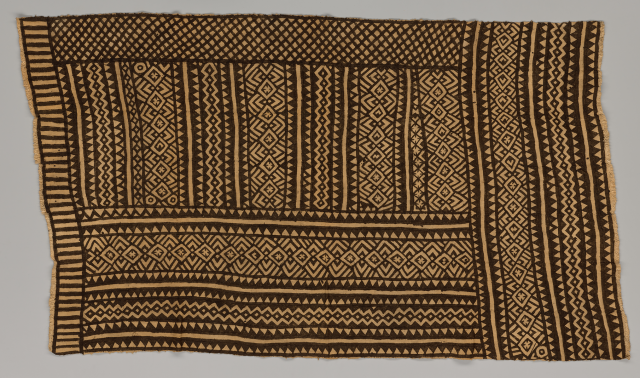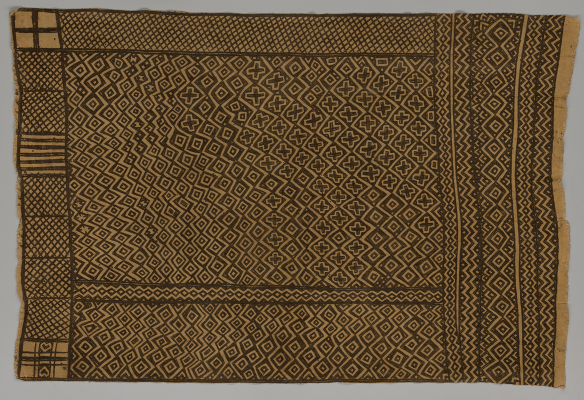Bamana Mud Cloth: From Mali to the World – Dallas Museum of Art
The Dallas Museum of Art’s current exhibition features textiles by the Bamana peoples of Mali recently acquired by the museum. On display until 4 December 2022 ‘Bamana Mud Cloth: From Mali to the World’ explores the labour-intensive processes involved in making mud cloth and identifies how the distinctive patterns have come to be used in products worldwide, from designer clothing to home furnishings.

Bogolanfini wrapper, Mali, Bamana peoples, 1970–1989, cotton, natural dyes, Dallas Museum of Art, Textile Purchase Fund.
Mud cloth, or bogolanfini, originated among the Bamana peoples of Mali. The dye-decorated cloth was traditionally used to make tunics for male hunters and wrappers for females to mark the most important milestones in their lives. Previously associated with rural village life, today bogolanfini is worn by city dwellers as a way of identifying themselves as native Malians and has also become popular internationally, for both fashion and homewares.
In HALI 204, Christine Giuntini describes the process of making bogolanfini: ‘Woven by men, it was embellished by women artists through a complex additive process whereby a thick ‘dye’ of tannin containing river mud is painted on the mordanted cloth. As the clay dries, the ensuing chemical reaction between the mordant and the mud fixes a rich brown colour to the cotton.’

Bogolanfini wrapper, Mali, Bamana peoples, 1970–1989, cotton, natural dyes, Dallas Museum of Art, Textile Purchase Fund.
In an NBC DFW article by Kimberly Richard, Dr. Roslyn A. Walker—the museum’s Senior Curator of the Arts of Africa, the Americas, and the Pacific and The Margaret McDermott Curator of African Art—explains: ‘In the modern world, cloths like this have been made by contemporary designers in Mali… They haven’t gone away. And they aren’t going away, there are African fabrics that are part of lives. We take them for granted, especially from the 60s forward, we’ve really had African fabrics become part of what we sleep on and what we sit on.’

Bogolanfini wrapper, Mali, Bamana peoples, 1970–1989, cotton, natural dyes, Dallas Museum of Art, Textile Purchase Fund.



























Comments [0] Sign in to comment